The pandemic only compounded the already dismal status of occupational health and safety in the country. Workers are either thrusted into work-from-home setups, forced to risk exposure to Covid-19 in their traditional workplaces, or retrenched altogether.
By ARNETH ASIDDAO
Bulatlat.com
MANILA — Even before the pandemic struck, workers had long been subjected to poor and unsafe working conditions. According to the International Labor Organization, there are more than 2.78 million work-related deaths and 374 million non-fatal injuries every year.
In the Philippines, the number is equally alarming even with underreporting and lax monitoring and data collection by the government. In a report by the Philippine Statistics Authority (PSA), there had been 44,739 cases of occupational accidents in 2015. The resulting occupational injuries from these accidents reached 50,961 cases, 358 of which led to permanent incapacity. There were also 156 work-related deaths recorded that year.
On May 14 of the same year, a fire raged in the Kentex slipper factory in Valenzuela, killing 74 people. A fact-finding report by the Center for Trade Union and Human Rights (CTUHR), the Ecumenical Institute for Labor Education and Research (EILER) and the Institute for Occupational Health and Safety Development (IOHSAD) found that Kentex violated numerous general labor and occupational health and safety standards, despite acquiring a certificate of compliance from the Department of Labor and Employment’s (DOLE).
“Even before the pandemic, the health and safety of workers have always been neglected,” IOHSAD executive director Nadia de Leon said in an online interview with Bulatlat.
IOHSAD is a non-government agency engaged in assisting Filipino workers develop comprehensive and self-reliant occupational health and safety (OHS) programs. It also conducts training, medical missions, studies and campaigns to forward better health and safety in the workplace.
A recipe for disaster
De Leon said the Philippines not having an occupational health and safety law until 2018 demonstrates how much the country is lagging behind in terms of workplace safety. Prior to Republic Act 11058 or Occupational Safety and Health Standards Law, OHS issues were only addressed in the Occupational Safety and Health Standards under Article 162 of the Labor Code.
She added that while the group considers RA 11058 a hard-earned victory, it is still a “watered-down” version of what advocates originally proposed.
Under RA 11058, an employer will only be fined a maximum amount of P100,000 (US $2,068) per day until the violation is corrected, with the maximum amount only imposed when the violation exposes the workers to “a risk of death, serious injury or serious illness.”
De Leon said that in order to compel companies to comply with requirements mandated by the law, criminalization of OHS violations is needed.
De Leon identifies the absence of clinics and safety officers in the workplace and failure to submit occupational safety reports regularly as common offenses that should have been addressed before Covid-19.
The pandemic only compounded the already dismal status of occupational health and safety in the country. Workers are either thrusted into work-from-home setups, forced to risk exposure to Covid-19 in their traditional workplaces, or retrenched altogether.
The Department of Trade and Industry (DTI) and DOLE only released the interim guidelines on workplace prevention and control of Covid-19 three months after the first recorded local case of the virus in January 2020.
De Leon said that aside from being delayed, the guidelines are also ‘very weak’ and lack sanctions for non-compliance.
According to DOLE, 83 percent of 3,888 business establishments monitored from January to February were complying with health protocols. These establishments account for 265,752 workers.
However, De Leon said that DOLE monitors only a small fraction of almost a million establishments in the country.
“The law is not enough. Provisions should be implemented, which includes for instance, providing enough budget to hire more labor inspectors, De Leon said in Filipino.
The workplace as Covid-19 hotspot
According to a WHO report, the regions with most Covid-19 cases are National Capital Region (NCR), Calabarzon (17.5 percent), Central Visayas (six percent) and Central Luzon (seven percent).
De Leon points out that the same regions have the greatest concentration of manufacturing economic zones and information technology hubs, increasing the possibility of Covid-19 having been acquired and spread in the workplace.
The report also shows that the most affected age group is 20-29 years (26 percent), followed by 30-39 years (23.6 percent), which De Leon identified as the working population.
DOLE has so far recorded 7,781 Covid-19 cases in 2,234 workplaces, De Leon said.
In July last year, over 300 workers tested positive for Covid-19 at a construction site in Taguig. Around the same time, 200 MRT-3 personnel were also infected. A BPO company in Iloilo City recorded 99 call center agents contracting the virus. CTUHR also reported in November that more than 200 workers from D’luxe Bags Philippines in Tarlac tested positive for Covid-19.
In a recent statement, the BPO Industry Employees Network (BIEN) reported over 40 positive cases from four BPO companies in NCR.
IOHSAD said they also received reports of at least 700 Covid-19 cases at a food manufacturing plant in Cavite.
Health or livelihood?
Even with companies following the minimum health and safety requirements, workplace infections still occur due to ‘no work, no pay’ schemes, De Leon said.
According to DOLE’s job displacement report, 428,701 employees from 26,000 business establishments were displaced from January to December last year due to the pandemic.
De Leon explained that workers experiencing Covid-19 symptoms tend to keep it to themselves for fear of losing 14 days of their salary during quarantine.
Contractual workers deprived of benefits and leaves that come with regularization are among the hardest hit.
Mary Anne Castillo, chairperson of Nexperia Philippines Workers’ Union, said that while minimum health and safety protocols were implemented by Nexperia, a high-volume semiconductor manufacturer, they still experienced an outbreak last year because the management only monitored and attended to Covid-19 cases among regular workers.
Castillo said that the contractual workers’ agency deducts swab test expenses from their salary, pushing workers to hide their symptoms. Contact tracing is also hampered because those identified with Covid-19 or its symptoms don’t want to give away names of their co-workers.
Recently, there has been another Covid-19 cluster in Castillo’s workplace, with 36 regular workers testing positive. Contractual workers are still unaccounted for.
Because of these conditions, IOHSAD calls for the immediate passage of House Bill No. 7909 or paid pandemic leave bill introduced by Makabayan bloc. The bill ensures 14 days of additional paid leave to confirmed or suspected cases of Covid-19. It also provides a maximum of 60 days of paid leave at 80 percent pay to workers with floating status.
The bill, if passed, would encourage workers to undergo swab testing and quarantine, De Leon said.
Struggle for workers’ health and safety
To prioritize workers’ health and safety is to actively fight the spread of Covid-19. In order to achieve this, IOHSAD, Kilusang Mayo Uno (KMU) and other labor organizations advocate for the passage of paid pandemic leave bill, cash aid for all, mass testing and aggressive contact tracing in workplaces, free and safe vaccines for workers and the classification of Covid-19 as an occupational disease.
On April 28, the Employees’ Compensation Commission of DOLE recognized Covid-19 as a work-related and occupational disease.
Under the ECC Board Resolution No. 21-04-14, infected workers are entitled to P30,000 ($620) as compensation. The amount is yet to be approved by President Rodrigo Duterte.
IOHSAD said the development is “a small victory of the Filipino workers and workers’ organizations in the country, who had to fight, online and offline, for this most logical and human measure.” ![]()

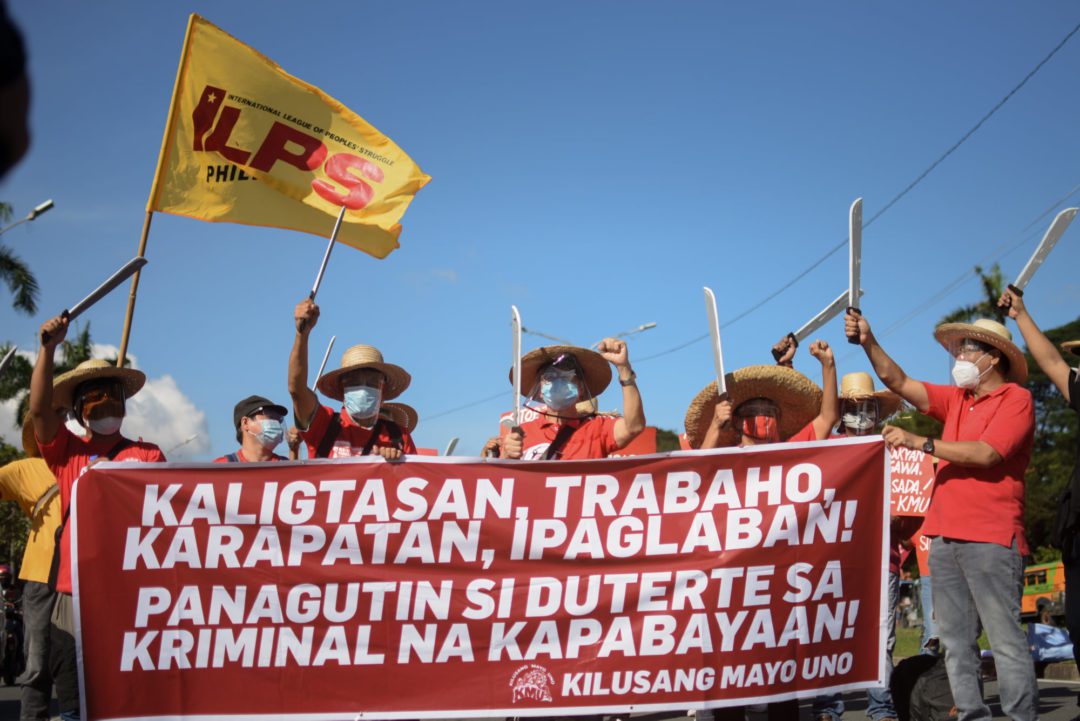
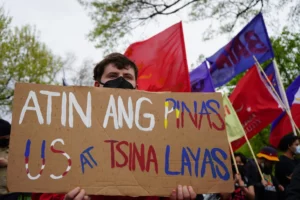

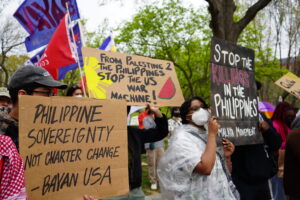

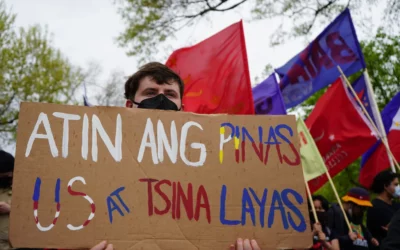

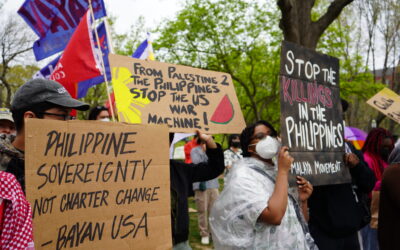

0 Comments